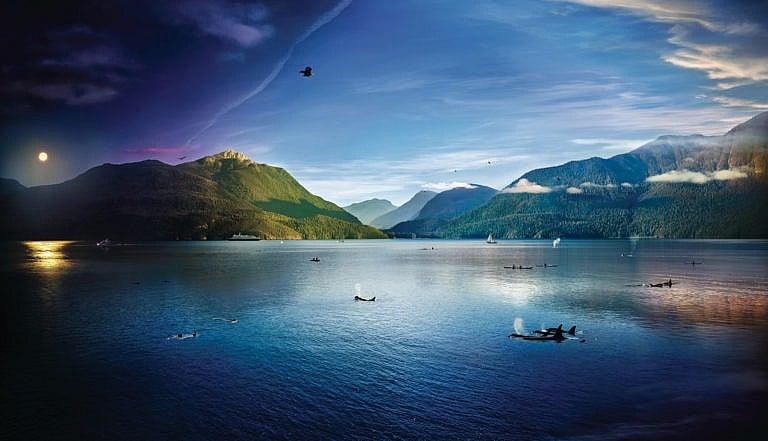Aye, there’s the rub
Killer whales are drawn to a part of northeast Vancouver Island, where they engage in a strange activity—’beach rubbing’

Robson Bight, B.C. part of Stephen Wilkes’ “Day to Night” series (Stephen Wilkes)
Share
There’s a duality to killer whales that belies their name. They’re calculating predators known to feast on great white sharks (they love the livers, news stories recently revealed). But there’s a playful, gentle side to orcas that inspires wonder—especially when the creatures visit a recess of northeast Vancouver Island they can’t seem to resist. In the summer and fall, northern resident orcas are drawn to Robson Bight, an ecological reserve on the west side of Johnstone Strait, just south of Port McNeill. The reserve, consisting of more than 1,700 hectares of land and water, was established to protect critical habitat for orcas. It’s also one of the few known places where the northern residents indulge in a quirk unique to their kind: they head for dangerously shallow waters near the shore, then brush against smooth pebbles below—a behaviour known as “beach rubbing.” In August 2016, photographer Stephen Wilkes shot photos of the bight from a fixed vantage point for over 26 hours, combining hundreds of moments and collapsing dozens of hours into a single image. Science has yet to explain beach rubbing, but maybe that makes it—and the bight—just a little more magical.